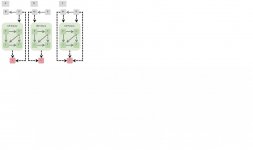Fred Ruhe
Well-known member

Dante Jiménez‐Ortega, Niclas Kolm, Simone Immler, Alexei A. Maklakov & Alejandro Gonzalez‐Voyer, 2020
Long life evolves in large brained bird lineages
Evolution (advance online publication)
doi: https://doi.org/10.1111/evo.14087
https://onlinelibrary.wiley.com/doi/10.1111/evo.14087
Abstract:
The brain is an energetically costly organ that consumes a disproportionate amount of resources. Species with larger brains relative to their body size have slower life histories, with reduced output per reproductive event and delayed development times that can be offset by increasing behavioral flexibility. The “cognitive buffer” hypothesis maintains that large brain size decreases extrinsic mortality due to greater behavioral flexibility, leading to a longer lifespan. Alternatively, slow life histories, and long lifespan can be a pre‐adaptation for the evolution of larger brains. Here we use phylogenetic path analysis to contrast different evolutionary scenarios and disentangle direct and indirect relationships between brain size, body size, life history and longevity across 339 altricial and precocial bird species. Our results support both a direct causal link between brain size and lifespan, and an indirect effect via other life history traits. These results indicate that large brain size engenders longer life, as proposed by the “cognitive buffer” hypothesis.
Enjoy,
Fred
Long life evolves in large brained bird lineages
Evolution (advance online publication)
doi: https://doi.org/10.1111/evo.14087
https://onlinelibrary.wiley.com/doi/10.1111/evo.14087
Abstract:
The brain is an energetically costly organ that consumes a disproportionate amount of resources. Species with larger brains relative to their body size have slower life histories, with reduced output per reproductive event and delayed development times that can be offset by increasing behavioral flexibility. The “cognitive buffer” hypothesis maintains that large brain size decreases extrinsic mortality due to greater behavioral flexibility, leading to a longer lifespan. Alternatively, slow life histories, and long lifespan can be a pre‐adaptation for the evolution of larger brains. Here we use phylogenetic path analysis to contrast different evolutionary scenarios and disentangle direct and indirect relationships between brain size, body size, life history and longevity across 339 altricial and precocial bird species. Our results support both a direct causal link between brain size and lifespan, and an indirect effect via other life history traits. These results indicate that large brain size engenders longer life, as proposed by the “cognitive buffer” hypothesis.
Enjoy,
Fred




